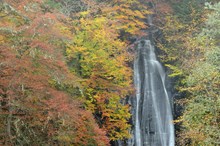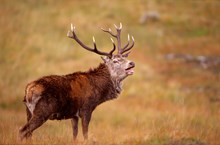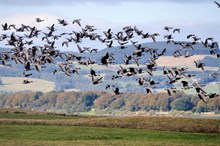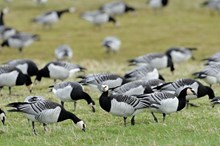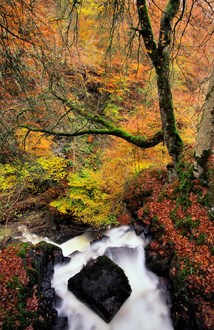15 October, 2020
Lead nature agency celebrates spectacular autumn wildlife
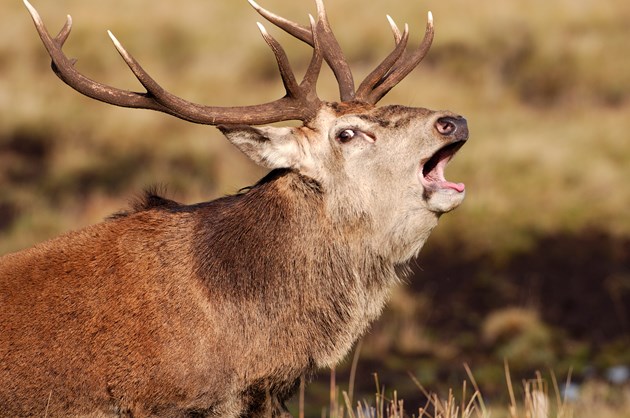
Autumn heralds some spectacular displays of wildlife in Scotland, with thousands of migrating geese arriving, the fierce deer rut, and surging waterfalls. Lead nature agency NatureScot is sharing stunning images for those who can’t travel to witness these wildlife wonders this year.
Debbie Bassett, NatureScot’s Biodiversity Strategy Manager, said:
“More Scots, concerned about their wellbeing, are turning to nature as a crucial way to help tackle stress in difficult times.
“Autumn in Scotland can be absolutely breath-taking. To see and hear a flock of geese lifting off from their night-time roost, or two stags bellowing and locking horns are two of Scotland’s greatest wildlife spectacles.
“People living near these incredible natural displays have a fantastic opportunity to enjoy them. But for anyone whose travel is restricted, there are these beautiful images that celebrate some of the best of Scotland’s wildlife.”
For those who are unable to get out and see and hear these spectacles because of Covid guidance or other reasons, NatureScot will be regularly sharing videos and pictures of these seasonal highlights, as well as other autumn wildlife, on its website, blog and social media channels.
Several species of geese migrate as far as 3,400 miles to reach Scotland for their winter feeding, before returning to more northern climes in the spring to breed. At Loch Leven, October sees a mass migration of pink-footed geese from Iceland. There may be as many as 20,000 to 25,000 geese at peak times – almost 10% of the global population. The geese are known for their incessant and high-pitched 'wink-wink' calls, which can often be heard when they fly in their typical v-formation in large flocks or skeins.
At Caerlaverock nature reserve, the entire Svalbard population of 40,000 barnacle geese stay on the reserve for the whole winter. The pink-footed geese on the reserve hit high numbers too, with a peak of 35,000 passing through in October on their way south, of which 3000 to 5000 stay on the reserve to roost all winter. Geese numbers peak again in January, as those from the south start to make their way north.
The red deer is Britain’s largest land mammal and the fierce rivalry between stags to mate with the hinds usually starts with roaring, posturing and thrashing the ground, before moving to a shoving match with clashing antlers. Stags can be seen and heard roaring from late September onwards on the nature reserves at Ben Wyvis in the north, Cairnsmore in the south, Mar Lodge Estate in the east, Beinn Eighe in the west, and the Isle of Rum in the Inner Hebrides. Stags are full of testosterone during the rut and can be aggressive, so keeping a distance is advised.
Waterfalls are often at their most impressive at this time of year when rainfall is heavier. Combined with autumnal leaves, waterfalls are an even more majestic sight than usual.
-ENDS-
Pictures and video: Pictures and video may be downloaded for free use. Please credit Nature-Scot/Lorne Gill.
Contact information
- Name
- NatureScot Media
- Telephone
- 0131 316 2655
- media@nature.scot
NatureScot is Scotland's nature agency. We work to enhance our natural environment in Scotland and inspire everyone to care more about it. Our priority is a nature-rich future for Scotland and an effective response to the climate emergency. For more information, visit our website at www.nature.scot or follow us on X at https://x.com/NatureScot
’S e NatureScot buidheann nàdair na h-Alba. Bidh sinn a’ neartachadh àrainneachd na h-Alba agus a’ brosnachadh dhaoine gu barrachd suim a chur ann an nàdar. Tha e mar phrìomhachas againn gum bi nàdar na h-Alba beairteach agus gun dèilig sinn gu h-èifeachdach le èiginn na gnàth-shìde. Tha an tuilleadh fiosrachaidh aig www.nature.scot no air X aig https://x.com/NatureScot
Downloads
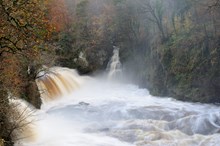
Bonnington Linn on the River Clyde, Clyde Valley Woodlands National Nature Reserve. Strathclyde and Ayrshire ©Lorne Gill-NatureScot


